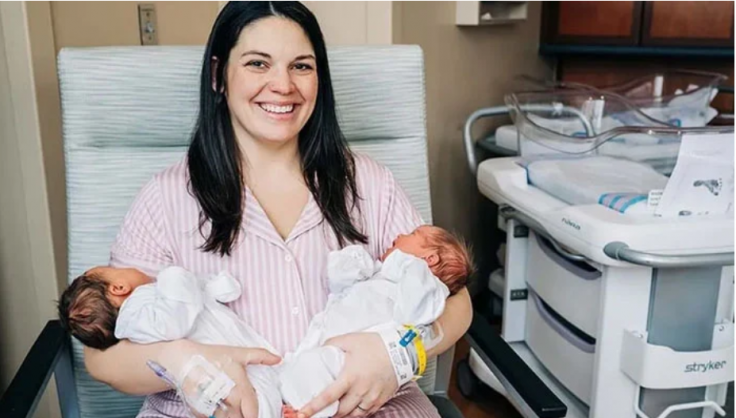In a remarkable medical event, 32-year-old Kelsey Hatcher, diagnosed with uterus didelphys (a double uterus), has given birth to a set of twins, each in a separate womb, at the University of Alabama at Birmingham (UAB) hospital. This extraordinary occurrence, deemed a "one-in-a-million" pregnancy by doctors, unfolded after 20 hours of labor, resulting in the delivery of Roxi Layla on Tuesday and Rebel Laken on Wednesday.

Hatcher's journey to motherhood took an unexpected turn, as she first discovered her rare uterine anomaly at the age of 17. Uterus didelphys affects only 0.3% of women and brings added complexities to pregnancy. This latest delivery marks Hatcher's fourth pregnancy, but the first time she has given birth to babies from both uteruses.
The revelation of the dual pregnancies occurred during a routine ultrasound, prompted by bleeding – a common concern for those with double uteruses due to higher miscarriage rates. Astonishingly, doctors found a second fetus developing in Hatcher's left uterus.
"I gasped," shared Hatcher in the hospital press release. "Sure enough, there was another baby. We just could not believe it." Her husband, Caleb, initially found the news incredulous, highlighting the rarity of such a pregnancy.
Despite the uniqueness of her situation, Hatcher's pregnancy was described as "routine" by her medical team. Additional appointments and a meticulously planned birth strategy aimed to anticipate all possibilities in the delivery process.
On 19 December, Hatcher, already dilated in both cervixes, arrived at UAB for the induced labor at 39 weeks. The medical team, faced with the challenge of monitoring two uteruses, required twice the effort and staffing.
After hours of labor, Roxi Layla was delivered vaginally, followed by the birth of Rebel Laken via C-section the next day. Reflecting on her extraordinary journey, Hatcher expressed her joy, saying, "After such a long and crazy journey, it meant the world to see both of my girls together for the first time."
In a statement released by the hospital, Hatcher acknowledged the significance of the event, stating, "Never in our wildest dreams could we have planned a pregnancy and birth like this ... but bringing our two healthy baby girls into this world safely was always the goal, and UAB helped us accomplish that." The birth of these twins with their own unique birth stories is a testament to the resilience and adaptability of modern medical practices in handling exceptional cases.









